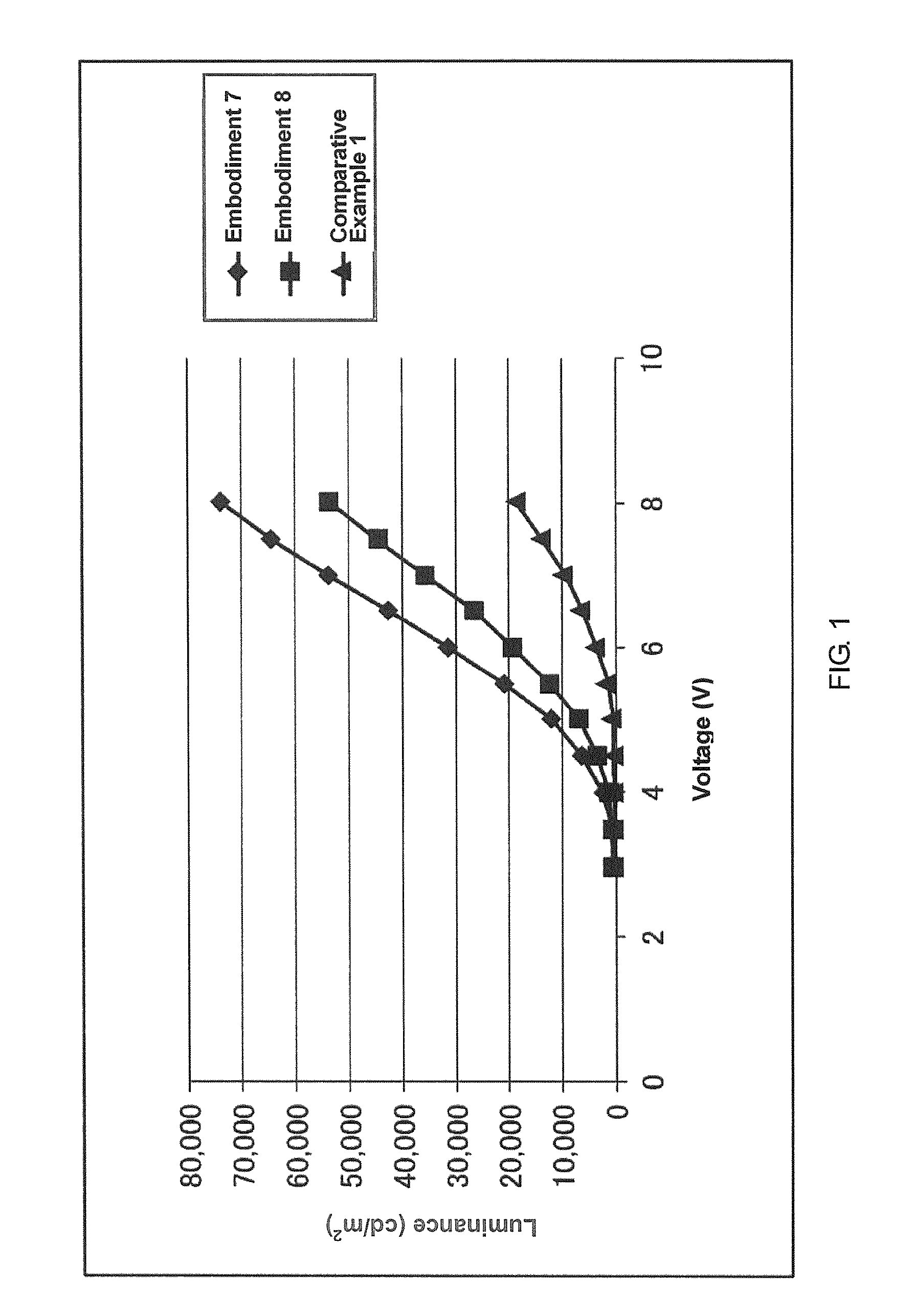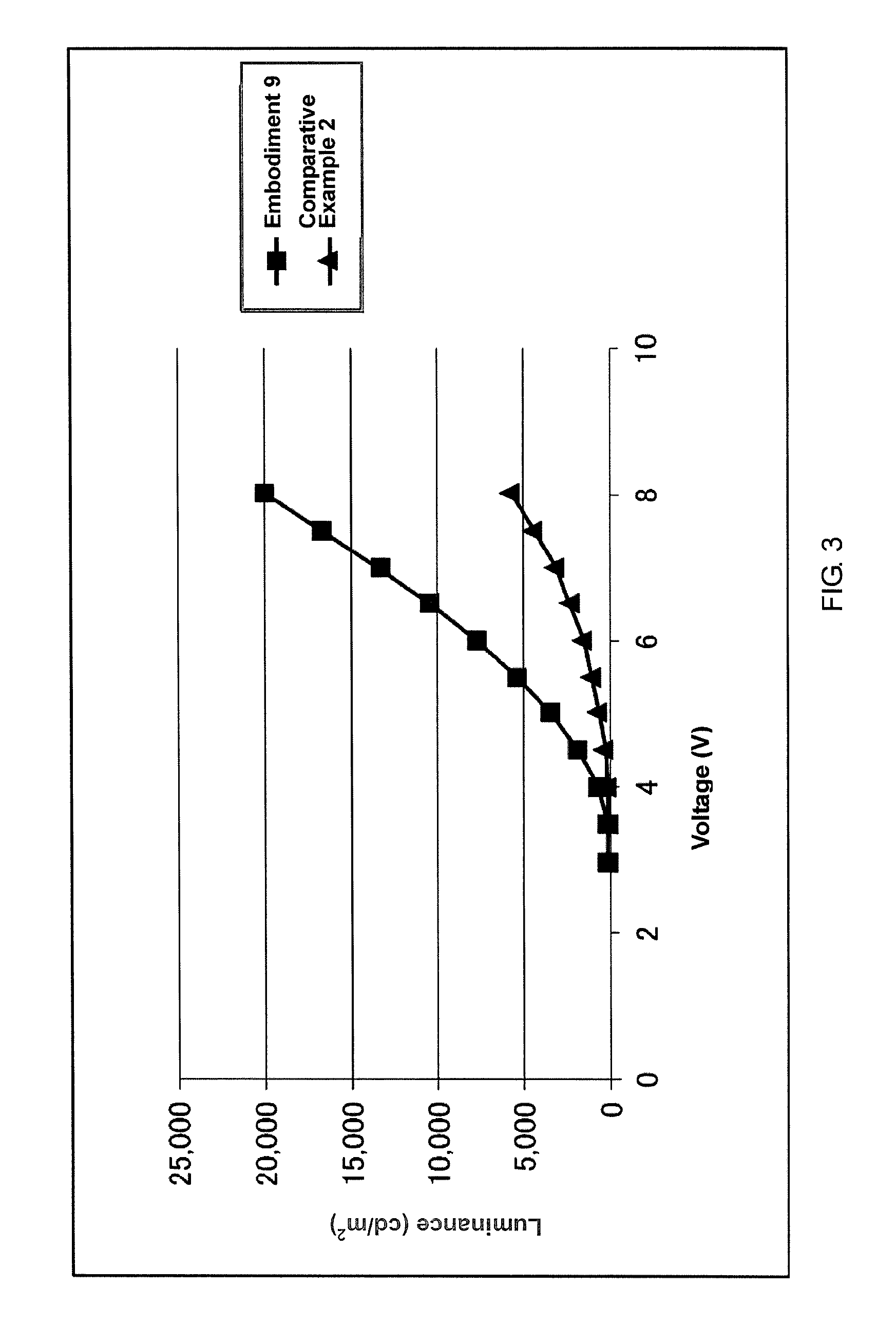Imidazole compound, material for electronic device, electroluminescent device, and electronic device thereof
a technology of imidazole and compound, which is applied in the direction of luminescent compositions, organic chemistry, luminescent compositions, etc., can solve the problems of low thermal stability of devices, insufficient stability of thin films using well known host compounds, and low stability of devices formed, etc., to achieve the effect of increasing luminescence efficiency, high stability of film forming functions, and presenting invention
- Summary
- Abstract
- Description
- Claims
- Application Information
AI Technical Summary
Benefits of technology
Problems solved by technology
Method used
Image
Examples
embodiments
[0108]Melting point (mp), infrared spectroscopy (IR), nuclear magnetic resonance (1HNMR (hydrogen NMR), 13CNMR (carbon NMR)), matrix-assisted laser desorption ionization time-of-flight mass spectrometry (MALDI-TOF-MS) are respectively used for additional identification of the compounds obtained from the embodiments.
[0109]The analysis and conditions used by the embodiments are recorded in the description of the embodiments.
reference example 1
Synthesis of 1-(3-bromo-phenyl)-2-phenyl-1H-phenanthro-[9,10-d]imidazole
[0110]Add acetic acid (300 ml) to a mixture of benzaldehyde (32.0 g) and 3-bromaniline (51.8 g), and after heating under reflux for 1 hour, add 9,10-phenanthrenequinone (62.7 g) and ammonium acetate (23.3 g), After a further heating under reflux for 3 hours, cool the reaction mixture until it is at room-temperature, then add methanol (3 L) and cool the mixture down using an ice-bath. Leave standing for 2 hours, and then filter out the colored solid produced. Use methanol (200 ml) to wash the colored solid to obtain a brown colored solid of 1-(3-bromo-phenyl)-2-phenyl-1H-phenanthro-[9,10-d] imidazole (82.0 g, 61% yield),
[0111]
reference example 2
Synthesis of 1-(3-bromo-phenyl)-2-(2-naphthyl group)-1H-phenanthro-[9,10-d] imidazole
[0112]Add acetic acid (30 ml) to a mixture of 2-naphylaldehyde (4.5 g) and bromaniline (5.0 g), and after heating under reflux for 2 hours, add 9,10-phenanthrenequinone (6.0 g) and ammonium acetate (2.2 g). After a further heating under reflux for 6 hours, cool the reaction mixture until it is at room-temperature. Add methanol (300 L) and cool the mixture down using an ice-bath. Leave standing for 2 hours, then filter out the solid and wash with methanol to obtain a brown colored solid of 1-(3-bromo-phenyl)-2-(2-naphthyl group)-1H-phenanthro-[9,10-d]imidazole (10.0 g, 69% yield),
[0113]
PUM
 Login to View More
Login to View More Abstract
Description
Claims
Application Information
 Login to View More
Login to View More - R&D
- Intellectual Property
- Life Sciences
- Materials
- Tech Scout
- Unparalleled Data Quality
- Higher Quality Content
- 60% Fewer Hallucinations
Browse by: Latest US Patents, China's latest patents, Technical Efficacy Thesaurus, Application Domain, Technology Topic, Popular Technical Reports.
© 2025 PatSnap. All rights reserved.Legal|Privacy policy|Modern Slavery Act Transparency Statement|Sitemap|About US| Contact US: help@patsnap.com



